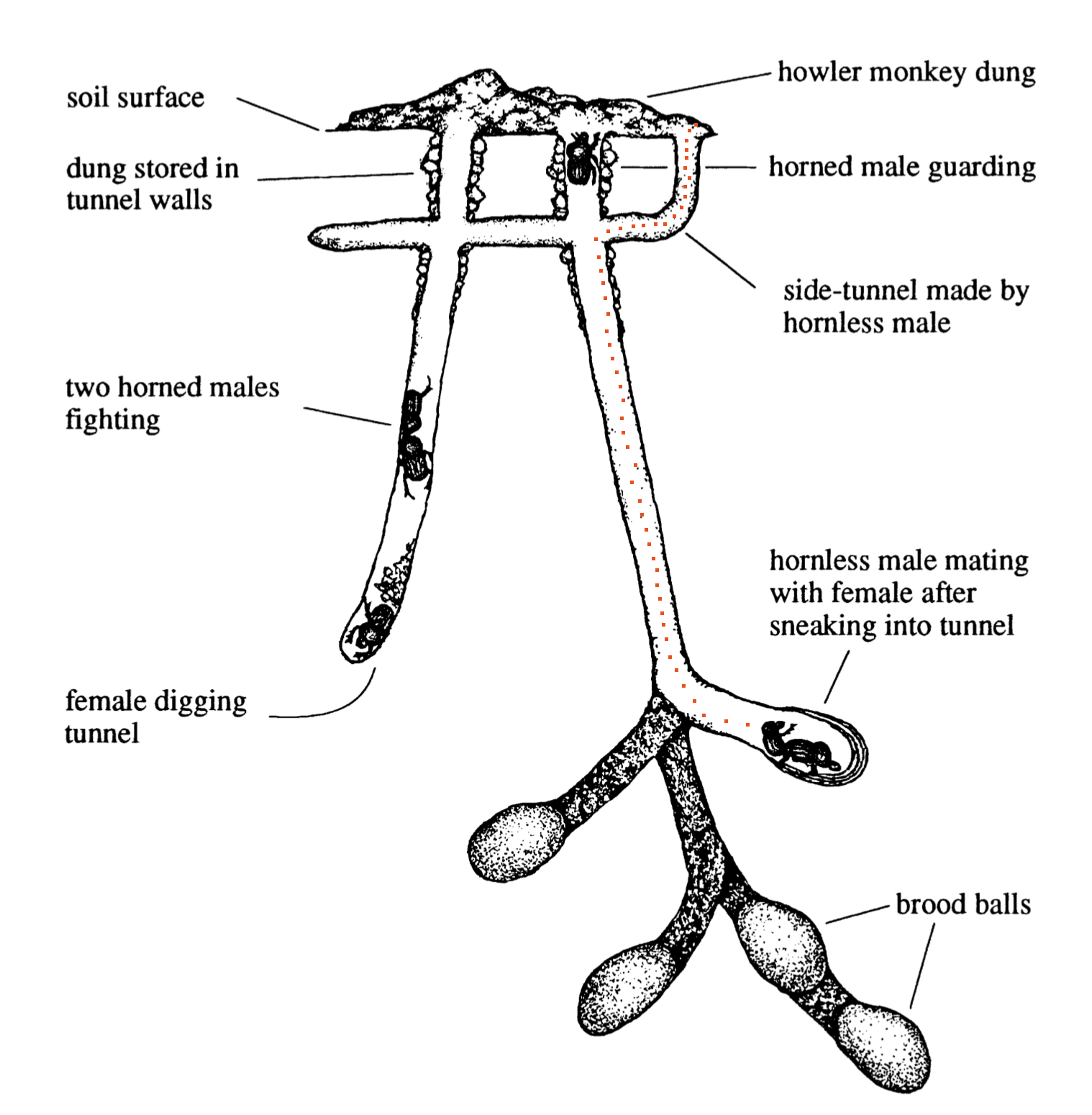Side-tunneling
January 28, 2018
The small have strategies to ensure that their genetic knowledge on how to be small is preserved. Since smaller size within a species often means the individual lacks the physical strength to power their way into the female’s heart they need to outsmart the strong. Like the small dung beatles in research done by Douglas J. Emlen.
Dung beetles show enormous variation in body size and horn size. Large males grow large horns, while small males grow only rudimentary horns and sometimes no horns at all. One would think that having small or no horns gives a disadvantage in competing to find a mate. Yet reality is more poetic. Horned and hornless males turn out to have very different types of reproductive behavior. Females excavate tunnels beneath dung, where they feed, mate and lay eggs. Large, horned males guard the entrances to tunnels containing females where they fight with all other males that attempt to enter. While this show of testosterone is going on, small, hornless males dig new tunnels that intercepted the guarded tunnels below ground. Side-tunneling behavior allows sneaking males to enter tunnels beneath the guarding male, and mate with females undetected.